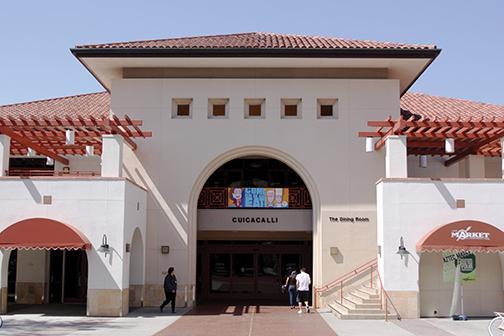Fad diets come and go, but some diet restrictions are more than that—they’re serious health concerns.
San Diego State’s dining services cater to students with all kinds of dietary needs. The Dining Room and University Towers Kitchen make accommodations for vegetarian, vegan and even gluten-free diets. Most people know about vegetarian and vegan diets, but gluten-free is less known. Those who do know may choose to be on gluten-free diets for the health benefits. However, there are some people whose gluten-free diet is more than just a healthy choice. These people have celiac disease, and for students here at SDSU, finding food that accommodates their needs may prove to be a challenge. However, SDSU Dining Services is making modifications to the on-campus dining services for these students.
What is celiac disease? A person with celiac disease cannot digest the nutrients found in gluten-filled foods. The immune system of someone who is gluten intolerant attacks the small intestine, making the body incapable of properly absorbing the food. Gluten is a protein found in common ingredients such as wheat, rye and barley, which are then used in foods such as beer and bread.
Currently, there is no treatment for celiac disease other than avoiding the consumption of gluten. To some with celiac disease, eating any amount of gluten can mean serious intestinal damage.
“Even though more and more restaurants have jumped on the gluten-free band wagon, it still gets tricky when I go out to eat sometimes because some restaurants are unfamiliar that there is a distinction between choosing to abide by a gluten-free diet and having celiac disease,” speech, language and hearing sciences freshman Miranda Koster said. “Eating out, I put the preparation of my food in the hands of someone else, which can sometimes cause inevitable gluten contamination of my food and it’s something I consider when I go out to eat. I make all efforts to ensure that isn’t the case by asking lots of questions to become aware of the ingredients and preparation techniques of my food.”
While many restaurants provide gluten-free options, the desire to eat gluten is still prevalent among gluten-intolerant people.
“Living with celiac disease can be hard when a particular food containing gluten looks appetizing,” journalism freshman Amanda Sherman said. “Although some foods can be tempting, maintaining the strict diet is not too hard, because the consequences of eating gluten are not worth it to me.”
Unfortunately, most of the gluten-free food cooked in TDR and UTK was being cooked with other food, causing cross-contamination. This caused celiac students to still get sick, even when choosing the gluten-free options.
“The ones with celiac disease are really crucial. The ones who don’t (have it) are kind of a fad,” SDSU Dining Services Director Paul Melchior said. “We thought we were doing a really good job and then a couple of students with celiac disease said (they) kept getting sick.”
In the past month, SDSU Dining Services has been working on new accommodations for gluten-free students.
“We identified a specific place in The Dining Room at Cuicacalli (Suites) … and it’s a gluten-free zone,” Melchior said.
There are now separate tabletop ovens for baking pizzas and other bread products and a new fridge has been installed. Along with designated cutting boards, pans and utensils, TDR’s gluten-free zone has made sure it’s safe for all celiac students to eat without having to worry about contamination.
“I can’t recall being sick after the more recent dining services have been in place,” Koster said.
“I have not had a reaction to gluten since the dining services made changes to decrease cross-contamination,” Sherman said.
Although changes can be made in the on-campus dining hall, SDSU Dining Services doesn’t run the many chain restaurants on campus. However, a few do provide gluten-free options for students. Vinnie’s Pizza and Pasta Bar serves gluten-free pasta and Olive Oil Cafe has a line of gluten-free desserts. At TDR, gluten-free cookies are baked in gluten-free ovens and are individually wrapped.
“The main thing is to talk to the cook that you’re working with and in the markets, talk to the employees in there and they can point out the gluten-free options,” Melchior said.
There are still more improvements that are in progress. For example, UTK is working to set up its own gluten-free zone as well. Thanks to the students who brought up the issue, and to SDSU Dining Services for putting in time, money and effort into making these changes, the school is now better equipped to take care of students with serious gluten-free needs.
Photo by Monica Linzmeier.







